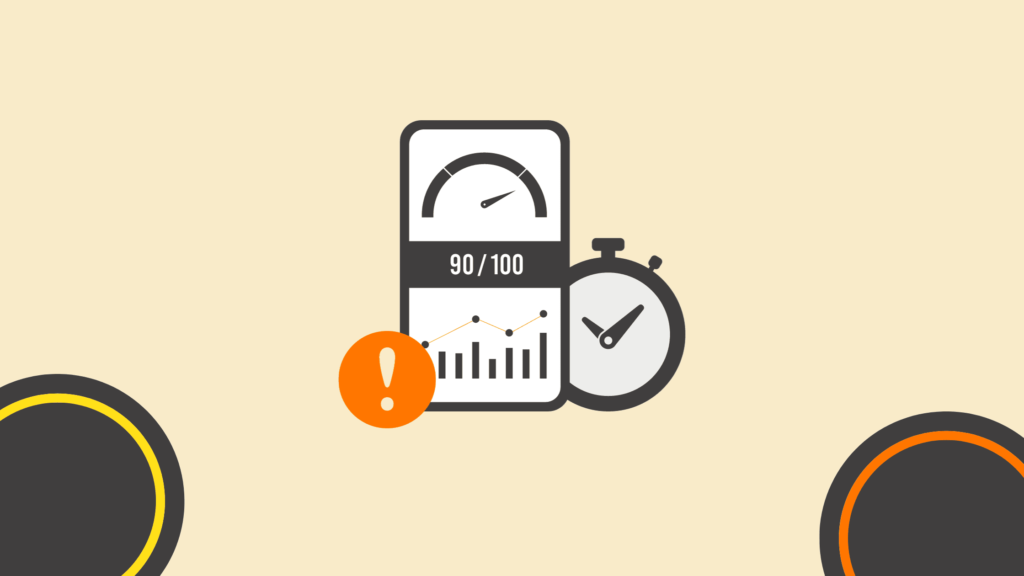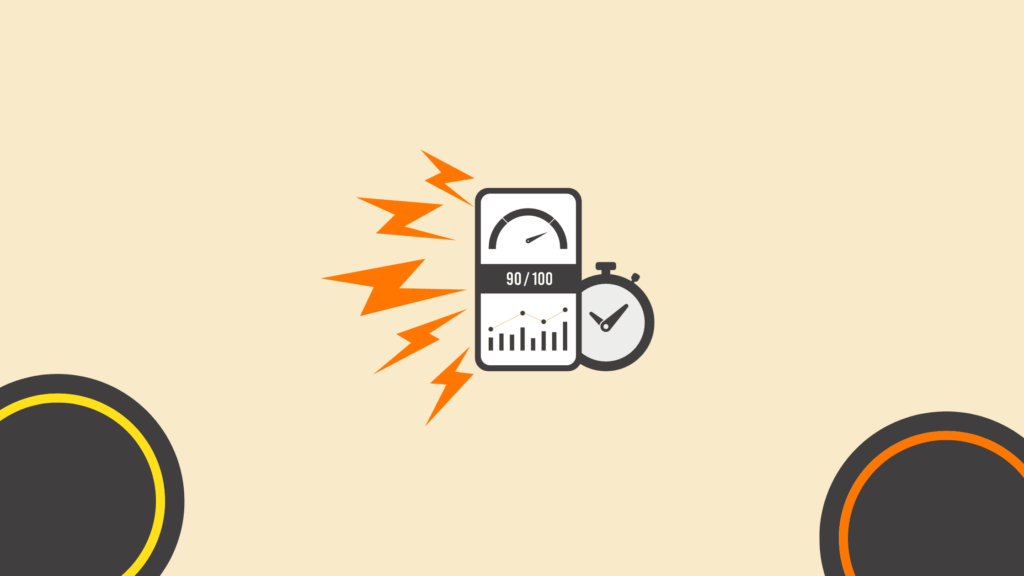Demystifying Google’s Core Web Vitals: A Guide to SEO Success
Staying ahead is essential since search engine optimization (SEO) and digital marketing are evolving quickly.
In recent years, Google’s Core Web Vitals has played a significant role in SEO strategy, garnering attention and rumors. Due to the growing dependence of website user experience and search engine rankings on their effectiveness, digital marketers and website owners must comprehend the relevance of Core Web Vitals and how they may affect SEO success.
Chapters

Why Are Google’s Core Web Vitals Important?
Before delving into the intricacies of Core Web Vitals and their relation to SEO, let’s begin by understanding why they hold such significance in the digital realm.
Enhancing User Experience
At the heart of Core Web Vitals lies the fundamental goal of enhancing user experience. Google recognizes that user satisfaction is closely linked to how fast a web page loads and how smoothly it functions. Therefore, Core Web Vitals focus on metrics directly impacting a user’s perception of a website’s performance.
Google’s Ranking Algorithm
Google has always prioritized delivering the most relevant and user-friendly search results. To achieve this, it continually refines its ranking algorithm. In 2020, Google announced that Core Web Vitals would become a ranking factor, indicating that websites with superior performance metrics stand a better chance of ranking higher in search results.
Mobile-First Indexing
With the increasing prevalence of mobile devices for internet access, Google has adopted a mobile-first indexing approach. This indicates that Google ranks and indexes websites mainly using their mobile versions. Core Web Vitals are now essential for both desktop and mobile SEO as a result.
Competitive Advantage
Websites that excel in Core Web Vitals gain a competitive advantage. A fast and user-friendly website improves user retention and conversion rates and sets your site apart from competitors. A better-performing webpage can be the differentiating factor in a crowded digital landscape.
Understanding Core Web Vitals and How they Affect SEO

Core web vitals explanation and their profound influence on SEO is pivotal for anyone navigating the digital landscape. These essential metrics, introduced by Google, are the yardstick by which a website’s performance and user experience are measured. Core Web Vitals, comprising Largest Contentful Paint (LCP), First Input Delay (FID), and Cumulative Layout Shift (CLS), are designed to evaluate the loading speed, interactivity, and visual stability of web pages. Their impact on SEO cannot be overstated, as they have become an integral part of Google’s ranking algorithm. Websites that excel in these vital performance indicators stand to benefit from higher search engine rankings, as they contribute significantly to the overall Page Experience score. In essence, comprehending Core Web Vitals is akin to unlocking the keys to SEO success in an increasingly competitive online environment where user experience reigns supreme.
Core Web Vitals directly influence your website’s SEO success by:
Affecting Rankings: Google uses Core Web Vitals as a ranking factor, and websites that perform well in these metrics have a higher chance of ranking in search results.
Improving User Experience: Websites prioritizing Core Web Vitals provide a better user experience, leading to higher user retention, lower bounce rates, and increased conversions.
Staying Competitive: As more websites optimize for Core Web Vitals, failing can put your site at a competitive disadvantage.
The Ultimate Guide to Core Web Vitals
Navigating the intricacies of Core Web Vitals is a crucial step toward achieving SEO excellence. To embark on this journey, following a comprehensive guide outlining the key strategies and steps is essential. The ultimate guide to Core Web Vitals begins with consistently monitoring your website’s performance through tools like Google PageSpeed Insights and Google Search Console. Identifying critical pages that receive the most traffic and contribute significantly to your business goals is the next strategic move. Once these foundational steps are in place, optimizing Core Web Vitals involves a multi-faceted approach. Implementing lazy loading for non-essential resources, such as images and videos, can significantly enhance the Largest Contentful Paint (LCP), ensuring swift loading of critical content. For First Input Delay (FID) and Cumulative Layout Shift (CLS) improvements, optimizing above-the-fold rendering by minimizing render-blocking resources and leveraging browser caching is essential.
To achieve SEO success through Core Web Vitals, it’s essential to have a comprehensive strategy. Here’s an ultimate guide that breaks down the steps you need to take:
Regular Monitoring
The first step in optimizing for Core Web Vitals is consistently monitoring your website’s performance. Google offers tools like Google PageSpeed Insights and Google Search Console that provide insights into your Core Web Vitals scores. Regular monitoring allows you to identify issues and track improvements over time.
Identify Critical Pages
Not all pages on your website are equally important for SEO techniques. Focus on optimizing Core Web Vitals for the pages that receive the most traffic and contribute significantly to your business goals. These may include your homepage, product pages, and landing pages.
5 Things You Can Do that Have the Most Impact on Core Web Vitals

To further demystify Core Web Vitals and guide you toward SEO success, let’s explore five specific actions that can have a substantial impact on these vital performance metrics.
1. Lazy Loading
Lazy loading is a technique that delays the loading of non-essential resources until they are needed. This is especially effective for optimizing LCP, as it ensures that the most critical content loads quickly, improving the user experience.
How to Implement Lazy Loading:
Use the HTML “loading” attribute: Specify “loading=’lazy'” for images and iframes to enable native lazy loading in modern browsers.
JavaScript libraries: Utilize JavaScript libraries like LazyLoad or Intersection Observer to implement lazy loading for custom elements and dynamic content.
Content management systems (CMS): Many CMS platforms have built-in lazy loading features or plugins that make implementation easier.
2. Optimize Above-the-Fold Rendering
Above-the-fold content refers to the part of the web page that is initially visible without scrolling. Optimizing this content can significantly impact LCP, ensuring a quick and engaging user experience.
Optimization Strategies for Above-the-Fold Rendering:
Minimize render-blocking resources: Identify and reduce render-blocking JavaScript and CSS that may delay the rendering of above-the-fold content.
Prioritize critical CSS: Inline critical CSS to ensure that the most important styles load quickly. Load non-essential styles asynchronously.
Leverage browser caching: Set up caching headers to allow browsers to store resources locally, reducing the need for repeated downloads.
3. Caching
Caching involves storing static resources like images, scripts, and stylesheets on the user’s device or intermediate servers. This reduces loading times and can positively impact LCP and FID.
Effective Caching Strategies:
Browser caching: Configure your server to provide appropriate caching headers (e.g., Expires, Cache-Control) for static assets. This allows browsers to cache resources locally for faster subsequent page loads.
Content Delivery Networks (CDNs): Use CDNs to cache and serve static assets from servers located closer to the user, reducing latency and improving loading times.
Cache purging: Implement cache purging mechanisms to ensure that updated content is delivered to users promptly without causing cache-related issues.
4. Image Optimization
Images often contribute significantly to page size and can impact LCP and CLS. Properly optimizing images is crucial for Core Web Vitals.
Image Optimization Best Practices:
Choose the right format: Use modern image formats like WebP, which offer better compression and quality compared to older formats like JPEG and PNG.
Compress images: Use image compression tools to reduce file sizes while maintaining visual quality.
Specify dimensions: Always include width and height attributes in image tags to reserve space and prevent layout shifts.
Implement responsive images: Serve different image sizes based on the user’s device and screen resolution to reduce unnecessary data transfer.
5. Optimize Delivery of JavaScript and CSS
Efficiently delivering JavaScript and CSS resources can positively impact FID and CLS. Minimizing file sizes and optimizing resource delivery are key.
Strategies for Optimizing JavaScript and CSS Delivery:
Minimize and concatenate: Minimize the number of separate JavaScript and CSS files and combine them into single files to reduce HTTP requests.
Use asynchronous loading: Load non-essential scripts asynchronously to prevent them from blocking the main thread during page load.
Defer non-critical scripts: Defer the execution of non-essential JavaScript until after the main content has loaded to prioritize interactivity.
Conclusion
SEO success in the contemporary digital environment depends on understanding Google’s Core Web Vitals and optimizing for them. Website owners and digital marketers can create a user-centric web experience that enhances rankings and encourages user engagement and conversion by comprehending the significance of these metrics, understanding their impact on SEO, and putting the strategies described in this guide into practice. Maintaining a competitive edge in the very competitive online market requires remaining informed about Core Web Vitals’ ongoing evolution and being proactive in optimizing website performance.
Author Bio:
 Sunny Popli is the owner of SPOPLI Web Development & Services. He loves to learn and grow. His key interest areas are to learn and implement the latest & impactful ideas in the field of digital marketing.
Sunny Popli is the owner of SPOPLI Web Development & Services. He loves to learn and grow. His key interest areas are to learn and implement the latest & impactful ideas in the field of digital marketing.
Master the Art of Video Marketing
AI-Powered Tools to Ideate, Optimize, and Amplify!
- Spark Creativity: Unleash the most effective video ideas, scripts, and engaging hooks with our AI Generators.
- Optimize Instantly: Elevate your YouTube presence by optimizing video Titles, Descriptions, and Tags in seconds.
- Amplify Your Reach: Effortlessly craft social media, email, and ad copy to maximize your video’s impact.